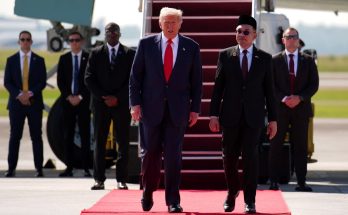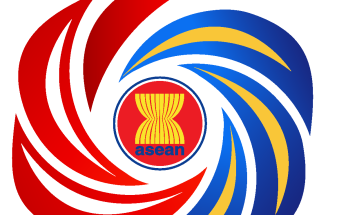After a delay of nearly four-five years, India’s first indigenous aircraft carrier, INS Vikrant, was finally launched on 12 August in Kochi. The sea trials are expected to begin sometime in 2016, a date that is debatable. Subsequently, the commissioning of the ship is expected to take place sometime in 2018. One won’t be suprised if it is delayed to 2020, given our track record. And hopefully by 2018, the elusive Vikramaditya may also join the Indian fleet as its second of the three aircraft carriers required. But the problem is, by then, the lone and ageing Viraat, currently operating with the Indian Navy, would have completed nearly 60 years of service and reached the stage to retire.
With a coastline of 7517 kms and also as a security provider for the entire Indian Ocean Region, India, as per the current thinking, sustenance capability and threat perception, requires at least three aircraft carriers. One carrier needs to be positioned at the western seaboard, one in the eastern and the other in the south or kept as reserve. However, it must be understood that the carriers, even though they are potent instruments of maritime power projection and equipped with air power, are vulnerable individually and are too precious to be operating alone. Hence, carriers normally are surrounded/ protected by “screening units” comprising other ships, including destroyers, frigates, submarines, etc. And they move as a composite unit termed as a “Carrier Battle Group” (CBG).
Unfortunately, at no point of time, the Indian Navy ever had three carriers together. This is despite the fact that, soon after Independence, the first long term 15-year-plan for the Navy envisaged four fleet carriers and two light carriers! Such grandiose plans soon came to a naught and subsequently in the Plans Paper No.1, it was suggested to have three aircraft carriers, one for each sea board and the third as a reserve. This proposal was supported by Governor General Admiral Mountbatten, Prof PMS Blackett (the British Scientific Advisor) and Adm Chaterjee. But the finances for such acquisitions proved difficult and finally the numbers were reduced to two light fleet carriers in the revised six-year plan which was officially approved. As per this plan, one of the carriers was supposed to be procured by 1954 and the other just two years later.
India purchased INS Vikrant (formerly HMS Hercules), a Majestic class carrier, from the UK in 1957. She was commissioned on 4 March, 1961. Vikrant was finally decommissioned in 1997 after a long operational innings during which she played a key role in enforcing the naval blockade of East Pakistan during the 1971 Indo-Pak conflict.
The second carrier to join the Indian Navy came much later. INS Viraat, a Centaur class 28,700 tons aircraft carrier, was purchased in April, 1986 after considering many offers, especially the Italian Garibaldi class. Having undergone four mid service refits and other short refits, its service is expected to be used only up to 2020 (some say 2018).
After Vikrant’s decommissioning, the Naval Headquarters sought to offset the loss. It started efforts to produce a carrier with indigenous design at the Directorate of Naval Design and construct it at the Cochin Shipyard. However, after much debate and spadework in 1989, the Navy signed a deal with French Direction des Constructions Navales International (currently known as DCNS) for designing a “Sea Control Ship”, subsequently to be named as the Air Defence Ship (ADS). Such a ship was contemplated to be manned by French aircraft.
In August 2006, the then Chief of the Naval Staff, Adm Arun Prakash, stated that the designation for the vessel had been changed from ADS to Indigenous Aircraft Carrier (IAC). The euphemistic ADS was adopted in the planning stages to ward off concerns about a naval build-up, not by any foreign power, but by the Indian Air Force.
After a roller coaster ride regarding the size and tonnage of the ship in the background of a financial squeeze, the carrier was finally decided to be around 40,000 tonnage. Started in 2008, (the first steel was, however, cut in April, 2005) the keel was laid in February 2009. The IAC 1 was finally floated out of its dry dock on 29 December, 2011.
The new carrier, also named Vikrant, clearly displayed the influence of Italian Andrea Dorea class (now called Cavour class), but hurdles dogged the new project. The programme had been fraught with integration worries, including a road accident in which giant generators being transported to the shipbuilding site in Kochi were damaged and had to be returned to their manufacturer for inspection. There were other problems associated with its steel and its source, its gear box and the list was seemingly endless.
In the meantime, the tempting offer by the Russians to sell its carrier Gorshkov (and the MiG 29K to man it) to India also proved disastrous in the longer run. Laid down in 1978 in Ukraine and launched in 1982, the commissioning of this vessel was delayed till 1987 because of software bugs in the new command and control system. Subsequently in 1994, the boiler room exploded. After repairs, the ship returned to service in 1995. But in 1996, she was withdrawn from service by the Russian Navy. The ship was sold to India in January 2004 “free of cost” except for the cost of $947 million for refits and overhauling. The delivery time was set for 2008.
In 2008, the Russians claimed $1.2 billion additionally, stating error in the calculation of the refit and wiring of the vessel. After the intervention of the Russian Government in December 2009, the two sides sealed the deal at $2.3 with 2012 as the delivery date. But the saga of controversies continued, with media reporting that during the 90-day sea trials, three out of eight boilers malfunctioned, delaying the commissioning date once again. It is now being stated that the earliest it can be operational is end 2013 or early 2014. Quixotically, while the MiG 29 K aircraft, that is expected to man the carrier, have already arrived, comprising the Black Panther squadron, the ship for which they are meant is to arrive yet.
In the meantime, the quest for the second indigenous carrier continues and it is currently in the design stage. The design of INS Vishal (IAC-II) is being undertaken by the Navy’s ‘Naval Design Bureau’. This ship is expected to be much bigger than its predecessor and have a displacement of 65,000 tons equipped with a CATOBAR. (Catapult Assisted Take Off But Arrested Recovery).
While the debate about the date and year of final induction of Vikrant continues, it must be realised that it has inherent consequential effects. Any delay costs additional money, with sources claiming that the total cost of the carrier will be more than US $5 billion, including the aircraft and weapon systems. When the project was approved in 2003, the ship was estimated to cost around $500 million. Sources said the construction of the carrier, minus the weapon systems and aircraft, will cost more than $2.2 billion.
Apart from the money factor, the delay will also affect the commencement of the IAC II project and most importantly leave large, indefensible gaps in the security calculus of the country.
Media reports suggest that India may be thinking of procuring a nuclear powered carrier to offset the current security imbalance. However, such a suggestion is easier said than done as India has to first procure a suitable carrier which itself will prove to be a herculean task under the present conditions. Additionally, it will have to master the process of handling complicated and large nuclear powered ships along with a large number of air assets and attendant screening ships operating in tandem.
Thus, aircraft carriers for India have been somewhat of a waiting for Godot. Even with the best of intentions, plans have gone awry and have been delayed.
(Dr P.K. Ghosh is a Senior Fellow at Observer Research Foundation, Delhi)
Courtesy: ORF; The article can also be read at: Waiting for Godot – Aircraft carriers for India
Author Profile
- India Writes Network (www.indiawrites.org) is an emerging think tank and a media-publishing company focused on international affairs & the India Story. Centre for Global India Insights is the research arm of India Writes Network. To subscribe to India and the World, write to editor@indiawrites.org. A venture of TGII Media Private Limited, a leading media, publishing and consultancy company, IWN has carved a niche for balanced and exhaustive reporting and analysis of international affairs. Eminent personalities, politicians, diplomats, authors, strategy gurus and news-makers have contributed to India Writes Network, as also “India and the World,” a magazine focused on global affairs.
Latest entries
 DiplomacyOctober 4, 2025UNGA Resolution 2758 Must Not Be Distorted, One-China Principle Brooks No Challenge
DiplomacyOctober 4, 2025UNGA Resolution 2758 Must Not Be Distorted, One-China Principle Brooks No Challenge India and the WorldJuly 26, 2025MPs, diplomats laud Operation Sindoor, call for national unity to combat Pakistan-sponsored terror
India and the WorldJuly 26, 2025MPs, diplomats laud Operation Sindoor, call for national unity to combat Pakistan-sponsored terror India and the WorldJuly 25, 2025When Fire Ends, Diplomacy Begins
India and the WorldJuly 25, 2025When Fire Ends, Diplomacy Begins India and the WorldJuly 16, 2025Operation Sindoor and its Aftermath: India’s Successful Diplomatic Outreach
India and the WorldJuly 16, 2025Operation Sindoor and its Aftermath: India’s Successful Diplomatic Outreach







